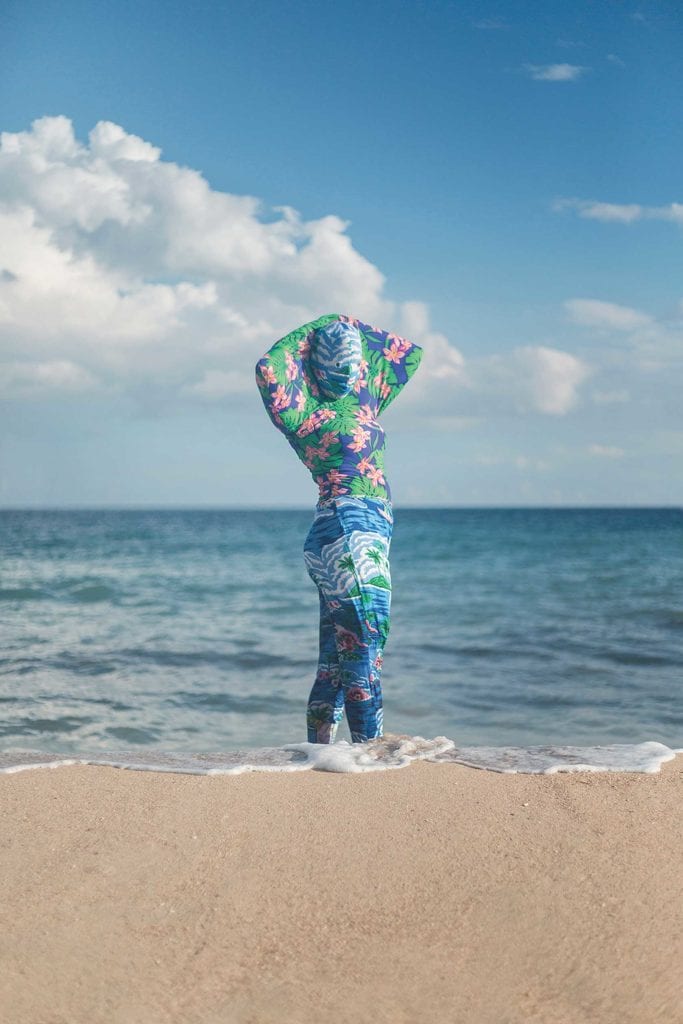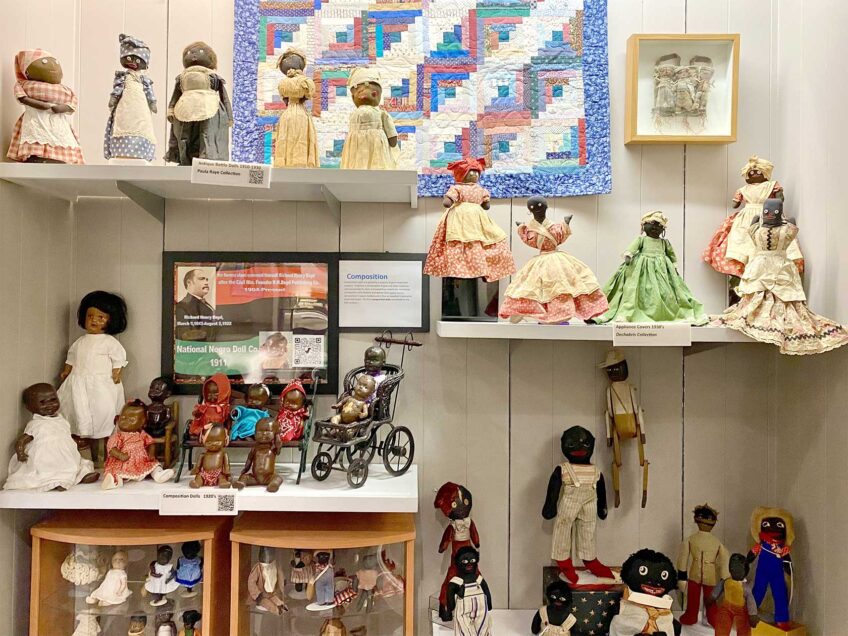
The first sight of “Joiri Minaya: Gazing Back” at the UMass Boston University Hall Gallery is a stretchy nylon fabric that wraps the side of the gallery in a loud tropical print. The clean glass lines of the space have been disrupted by this harsh pattern, and viewers are encouraged to physically climb through holes in the fabric to enter the exhibition. Those who do are richly rewarded by a diverse show by the gifted, probing Dominican-American artist Joiri Minaya.

#dominicanwomengooglesearch, 2016, installation view at the Sunroom Project Space at Wave Hill, Bronx, NY. PHOTO: STEFAN HAGEN
This is Minaya’s first New England solo show. Running through May 4, the exhibition includes a wide array of media, from video and installation works to photographs. “I’ve always seen her work as very disparate in media but very focused in subject matter,” says curator Sam Toabe. “Her works essentially look at ways of seeing.”
The tropical print is a theme that threads throughout the whole exhibition and underscores a major thesis of Minaya’s work. “There are so many conversations in public spaces about reclaiming identity,” says Toabe. “I think oftentimes people, especially in the States, think of these places just as tourist destinations. I think she’s trying to find a sense of self.” Caribbean cultures and identities often are erased in favor of a generic, cruise-ship friendly facade.

“I can wear tropical print now” series, 2018, found used shirt, spandex, custom wooden frame. PHOTO: COURTESY OF RED BULL HOUSE OF ART
In the center of the room hangs the installation piece “#dominicanwomengooglesearch.” A series of digital prints on Sintra board reflect on one side images that come up in a Google search of “Dominican Women.” On the other side, the cut-outs are collaged with a nondescript tropical print. The images are almost exclusively of women’s body parts, illustrating how Dominican women and their culture are stripped down to sexualized objects.
On the tropical print side of one of the cutouts, the words “Dominican Republic” are screen-printed on an island in the pattern. The words barely fit. Toabe says Minaya has found that same print with a number of other Caribbean island names written in, as though they are interchangeable.
Further into the show, viewers are encouraged to sit on white plastic deck chairs while they view the video piece “Labadee.” In it, Minaya documents a slice of beach in Labadee, Haiti, that’s leased by the Royal Caribbean cruise line. The fenced-in area is a world constructed purely for cruise ship visitors, serving up a stereotyped, whitewashed version of the island’s culture. By sitting in the deck chairs watching musicians perform, the viewers take on the role of cruisers, getting spoon-fed a false experience while locals on the other side of the wall live dramatically different lives. The piece, like the show as a whole, forces viewers to confront not just the problem at hand, but their own role in it.
Minaya will deliver an artist talk on April 18 at 5 p.m. in University Hall’s second-floor auditorium, followed by a reception in the gallery.


![Banner [Virtual] Art Gallery](https://baystatebanner.com/wp-content/uploads/2024/04/Cagen-Luse_Men-at-store-e1713991226112-150x150.jpg)

![Banner [Virtual] Art Gallery](https://baystatebanner.com/wp-content/uploads/2024/04/Cagen-Luse_Men-at-store-e1713991226112-848x569.jpg)

